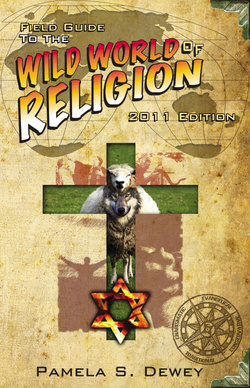Читать книгу Field Guide to the Wild World of Religion: 2011 Edition - Pamela J.D. Dewey - Страница 31
На сайте Литреса книга снята с продажи.
Trend Six: One-man Wonders
ОглавлениеParalleling the One-doctrine Wonders is the emergence of a significant number of “One-man Wonders.” These are individuals (primarily men, but a few women are in the category) who have attained a status of guru among their followers. Each one, within his/her own circle of supporters, is viewed as, at the very least, the most significant teacher on Earth today. And he or she may be viewed, at most, as a unique end-time apostle or prophet, one who has “restored truths lost since the first century.”
This sort of religious figure has been with us since the first century. But, other than a few notable exceptions such as Joseph Smith, founder of the Mormon religion, and Ellen G. White, alleged “prophetess” of the Seventh Day Adventist movement, such gurus have had a very limited impact in the past. It is the 21st century’s explosion of communication capabilities that has allowed modern religious figures to quickly gather a following over wide areas far from their home base. And it is this very long distance factor that allows followers to maintain illusions about their hero that might well be easily shattered if they were in personal contact with him. Most communication between teacher and student in this situation flows only one way, through a barrage of newsletters, recordings, radio and TV programs, financial support solicitations, and more. The student can try to communicate in the opposite direction, but any letters or phone calls from supporters will likely be answered by some low-level functionary in the guru’s ministry.
In the past, such teachers as Billy Graham and Hal Lindsey have had a wide contingent of admirers who really enjoyed their books or broadcasts. However, those admirers usually had a local church to which they belonged, a local pastor whom they consulted for their problems, and a local group of like-minded believers with whom they enjoyed regular face-to-face fellowship. Their interest in Graham or Lindsey or others like them was a “side” interest, just as would be a hobby such as stamp collecting.
But the One-man Wonders of the 21st century are more than a side interest of their followers; each one is the spiritual center around which his followers live their lives. Some such men are relatively benign in their influence, although supporting them may be a major financial drain on their most dedicated followers. They are perhaps even unaware that some of their followers are focused so narrowly on their ministry. It is those who have delusions of grandeur of their own that are the cause of the greatest concern regarding this troubling trend. For such men and women can begin to believe so strongly in their own importance, and be so convinced that they have an intimate pipeline to God, that they begin imposing their own idiosyncratic teachings about every minute part of life on their followers. This can include the mundane—what sex positions are permissible for married couples, how long is too long for men’s hair, how short is too short for women’s hair, etc. It can also include the spiritual—the authority to declare who has the Holy Spirit and who doesn’t, to cut off from fellowship those who do not bow to the teacher’s every command, to give authoritative interpretation on the most obscure and debatable passages of the Bible. Those who are obsessed with one teacher in this way often find themselves associating or affiliating only with others who share their obsession. They frequently withdraw from fellowship with whatever local congregation they have been a part of, in order to gather with those of like mind to listen to CDs or DVDs of their new teacher together—weekly, or even daily.
Those groups that form around such teachers are susceptible to the next troubling trend.
